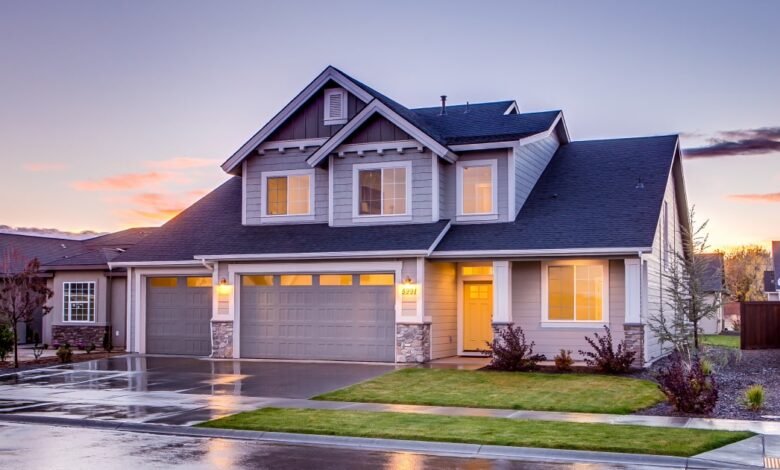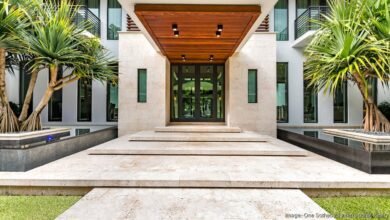Build Your Own House: The Ultimate Guide to Creating Your Dream Home

Build Your Own House is one of the most exciting and fulfilling experiences a person can go through. Not only does it give you a sense of accomplishment, but it also allows you to create a living space that is truly unique to your needs and desires. Whether you’re looking to Build Your Own House a cozy family home or a modern architectural marvel, the process can be both thrilling and overwhelming. This guide will take you through every step of the process, from planning and budgeting to managing construction and finalizing the details of your dream home.
Planning Your Home Build
Understanding Your Needs and Budget
Before diving into the exciting process of Build Your Own House it’s essential to start with a solid foundation – understanding your needs and setting a realistic budget. The first step is to assess your lifestyle and how much space you need. For example, if you have a growing family, you may need multiple bedrooms and bathrooms, a spacious kitchen, and areas for both relaxation and entertainment. If you work from home, having a dedicated office space could be essential.
Once you’ve determined your requirements, it’s time to establish your budget. Build Your Own House a home is an investment, and it’s crucial to set a realistic budget that accounts for all potential costs. Don’t forget to include costs for land, permits, construction, materials, interior furnishings, and unexpected expenses that may arise. Typically, the price per square foot to Build Your Own House a home varies depending on your location, the materials you choose, and the design complexity.
It’s wise to secure financing early in the process. Many Build Your Own House will need to take out a construction loan, which differs from a traditional mortgage. This loan is typically used to fund the construction phases and is paid off in stages as work progresses. If you’re unsure about financing, consulting with a financial advisor or mortgage broker can help you navigate this process and ensure that you’re making the best decision for your long-term financial health.
Choosing the Right Location
Selecting the right location for your Build Your Own House is just as important as designing it. The location will not only influence the functionality of the space but also its value over time. Start by considering proximity to essential services such as work, schools, shopping centers, hospitals, and recreational areas. Is the land close enough to your daily commute? Is the neighborhood safe, and does it align with your lifestyle?
Additionally, consider the long-term prospects of your chosen location. If you’re planning to live in your home for many years, it’s worth thinking about factors such as future development in the area, local property values, and access to public amenities.
Another crucial element is understanding the land’s zoning laws. Zoning laws regulate the type of structure that can be built on a particular piece of land. It’s essential to check with local authorities to ensure that residential construction is permitted. You should also research environmental concerns, such as flood zones or soil stability, which could affect the construction process. Having this knowledge upfront will save you a lot of time, money, and headaches later.
Designing Your Dream Home
Now that you know your needs and have a clear budget and location in mind, it’s time to think about designing your dream home. At this stage, many Build Your Own House will either hire an architect or use online design tools to create a custom layout. The key is to ensure that the design works for your lifestyle and incorporates both function and style.
When creating a design, focus on the layout of rooms, ensuring they flow together efficiently. Consider open-plan spaces, especially if you enjoy hosting family gatherings or parties. Don’t forget to factor in future needs, such as the possibility of expanding or adding new rooms. The design should be flexible enough to adapt to changes in your family dynamics over the years.
Energy efficiency is another important consideration. Many homeowners now prioritize sustainable design and eco-friendly materials. Incorporating energy-efficient appliances, solar panels, and insulation can save you money in the long run while reducing your carbon footprint. A well-designed home should not only look beautiful but also be functional, comfortable, and sustainable.
The Construction Process
Hiring Professionals: Contractors and Builders
Once you’ve finalized your design, the next step is to hire the right professionals to bring your vision to life. While it’s possible to manage the construction process yourself, most people prefer to hire a general contractor to oversee the work. A general contractor will coordinate with various subcontractors, such as electricians, plumbers, and carpenters, ensuring that everything is built to code and within schedule.
Choosing the right contractor is crucial. Start by seeking recommendations from friends, family, or colleagues who have experience with construction. Online reviews and ratings can also help you identify reliable Build Your Own House in your area. Once you’ve shortlisted potential contractors, request bids and assess their experience, expertise, and reputation in the industry. Don’t hesitate to ask for references or view previous projects they have completed.
It’s essential to establish clear communication with your contractor from the outset. Ensure that they fully understand your vision and that they’re committed to sticking to your budget and timeline. Having a well-written contract that outlines every detail of the project is vital to avoid misunderstandings later.
Securing Permits and Legal Considerations
Before any physical work begins, it’s essential to secure the necessary permits and understand local Build Your Own House codes. Building permits are legal documents that grant you permission to construct your home in compliance with municipal regulations. These permits ensure that your home meets safety standards, adheres to zoning laws, and is structurally sound.
The permitting process can be time-consuming, but it’s necessary to ensure that your home is built safely and legally. To obtain a permit, you will need to submit detailed building plans to your local municipality for approval. You may also need to undergo inspections during different stages of construction to verify that the work is being carried out according to code.
Working with a knowledgeable contractor can simplify the permitting process, as they’ll be familiar with the specific requirements for your area. It’s crucial to ensure that all required permits are obtained before starting construction, as failing to do so can lead to fines or even force you to demolish parts of your structure.
Breaking Ground: Starting the Construction
With permits in hand, it’s time to break ground! The first step in the construction process is site preparation. This includes clearing the land, leveling the ground, and digging the foundation. Depending on your design, your foundation might be a concrete slab, crawl space, or basement.
Once the foundation is set, the framing process begins. Framing involves constructing the skeleton of your home, including walls, floors, and roof supports. This stage is exciting because it gives you a clear visual representation of how your home will take shape.
After the frame is up, work continues with the installation of plumbing, electrical wiring, and HVAC systems. While these systems are hidden from view, they are essential for the function and comfort of your home. Once these systems are in place, drywall is installed, followed by flooring, windows, and doors. This is when your home starts to look less like a construction site and more like your future living space.
Managing Costs and Staying on Budget
Estimating Construction Costs
When Build Your Own House a home, it’s crucial to have a clear understanding of the costs involved. Estimating construction costs will allow you to allocate your budget effectively and avoid overspending. Begin by breaking down the costs into categories, such as land acquisition, permits, labor, materials, and interior finishes.
You should also account for additional costs that may arise during construction. Unforeseen delays, changes in design, or the discovery of issues like poor soil conditions or outdated infrastructure can add significant costs to the project. Having a contingency fund in place – typically around 10-15% of the total budget – will help mitigate these challenges.
Working closely with your contractor will give you a more accurate estimate of costs and help you avoid unnecessary expenses. Don’t hesitate to ask questions and make adjustments if you feel certain elements of the Build Your Own House are exceeding expectations.
Ways to Save Money Without Compromising Quality
Build Your Own House a home is a significant investment, but there are ways to save money without compromising on quality. For instance, you could choose cost-effective yet durable materials. Opting for engineered wood, for example, can provide the look of hardwood flooring without the hefty price tag.
Another way to save money is by doing some of the work yourself. While construction tasks like framing or plumbing are best left to professionals, there are certain tasks – like painting, landscaping, or installing fixtures – that you can take on yourself. Not only will this reduce labor costs, but it also gives you a personal touch on your new home.
Don’t underestimate the power of a well-planned design. An efficient layout can reduce construction time and minimize waste. For instance, open-plan spaces reduce the need for extensive walls, while using standard-sized materials can lower material costs. Your contractor can help guide you toward design choices that strike the perfect balance between cost and quality.
Managing Delays and Setbacks
Delays are inevitable when Build Your Own House, but proactive planning can help you manage setbacks effectively. Weather conditions, material shortages, and contractor availability can all cause delays, so it’s important to factor some buffer time into your construction timeline.
Communication with your contractor is key. Regular check-ins will help you stay informed about the progress of the project and address potential delays early on. Additionally, maintaining flexibility in your plans and timeline can help ensure that the project continues to move forward despite any unforeseen obstacles.
Finalizing Your Dream Home
Inspection and Quality Control
Once construction is nearing completion, it’s time for a final inspection. This is a crucial step in ensuring that your new home meets safety standards and complies with local Build Your Own House codes. A professional inspector will review all aspects of your home, from structural integrity to electrical systems, plumbing, and heating.
Any issues found during the inspection will need to be addressed before you can move in. Be prepared for the possibility of repairs or adjustments. These might seem frustrating, but they’re necessary to ensure that your home is safe and functional.
Decorating and Furnishing Your Home
With your home built, it’s time to turn your attention to decorating and furnishing. This is where your unique style and personality come to life. Start by choosing a color scheme that reflects your taste, whether it’s warm neutrals, bold hues, or a more minimalist palette.
Furnishing your new home can be exciting but expensive. Set a budget for each room and prioritize essential items like beds, sofas, and kitchen appliances. Over time, you can add personal touches like artwork, rugs, and décor.
Moving In and Maintenance
Once everything is set up, the final step is moving in. While this can be a stressful process, it’s also incredibly rewarding. Take time to organize your belongings and make sure everything is in its place.
After moving in, it’s important to stay on top of regular maintenance tasks. This includes checking the HVAC system, cleaning gutters, inspecting the roof, and maintaining the landscaping. Regular maintenance will ensure that your home remains in top condition for years to come.
Conclusion
Build Your Own House is a monumental undertaking, but with careful planning, budgeting, and the right team, it can be a deeply rewarding experience. From choosing the perfect location and designing a functional layout to managing costs and finally moving into your dream home, every step of the process is a testament to your vision and perseverance. By following the steps outlined in this guide, you can ensure that your home-Build Your Own House journey will be successful, enjoyable, and uniquely yours.
YOU MAY ALSO READ
michelin star restaurants denver
Welcome to the world of endless possibilities, where creativity meets innovation. Explore cutting-edge ideas and discover new perspectives with every click. Stay inspired by trends and insights from experts around the globe. Whether you’re into tech, lifestyle, or business, there’s something for everyone. Dive into fresh content and expand your knowledge with engaging stories. Let your curiosity lead the way as you navigate through these amazing resources. Enjoy the journey and uncover new horizons with every visit to these platforms—now enhanced by language and thoughtful additions.


